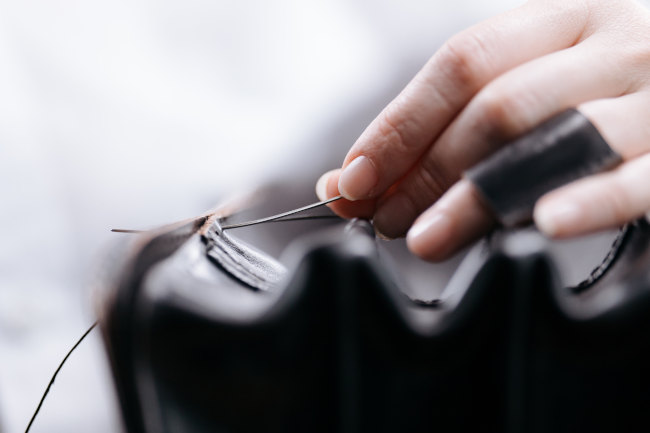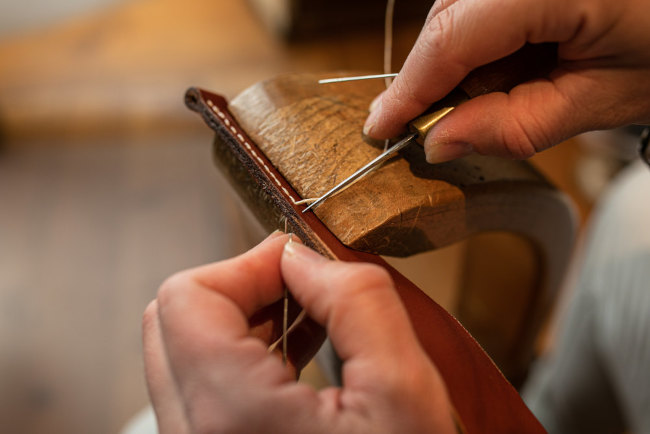The renowned French house Hermès has been one of the pillars of fashion for 185 years, with its innovative contributions in accessories, clothing and footwear. This great atelier has become a true inspiration for other emerging fashion houses, and is home to the most outstanding creations of the last century; the trinity of Hermès handbags: Birkin, Kelly and Constance.
But, surely you have asked yourself why the value of these accessories is so high? What are the reasons for this besides the materials and the exclusivity that accompanies these designs? Well, the answer lies in the way they are made.
Here we show you the true value of the Hermès tradition of craftsmanship.
- History of a craft
- Traditional methods
- The value of century-old techniques
History of a craft

From its beginnings in 1837, Hermès emerged as an artisan workshop where riding implements and saddles were crafted. It all started as an idea of the craftsman Thierry Hermès in Paris, who worked individually on each piece he made, using quality leather and a very particular stitching method, the saddle method.
Over the years, Thierry’s personal techniques spread through several generations of his family, passing from sons to grandsons, and from grandchildren to son-in-laws. The workshop began to expand and the knowledge of making accessories soon evolved into handbags and other products.
What is certain is that the work of making each one of the pieces subscribes to almost two hundred years of tradition of these techniques originally implemented by Thierry Hermès, which results in a perfect formula of an artistic work carried out with a pair of skilled hands and the necessary tools.
Taking this into account, the work of Hermès’ craftsmen is in itself an artistic feat to make each accessory and dedicate it the time it deserves.
If you want to know more about the history of the French atelier Hermès, check out this post.
Traditional Methods

Within the variety of specialized techniques used by the artisans of the French atelier, there are specific formulas to ensure the success of the making of each piece, no matter what bag or accessory is intended to be created.
Without a doubt, the most important traditional technique of all is the saddle stitching, this dates back to the years of Thierry Hermès, when the craftsman devised a type of diagonal stitching made with two thick needles that intertwine the stitches, creating a constant pattern of diagonal stitches that hold the materials in position. The saddle stitching technique prevents the stitches from wearing out or coming loose over the years, and if any of them do, then the others will stay in place.
In addition to the complex sewing pattern that is used to assemble each piece, there are many other techniques, such as waxing the thread for the seams, processing the leather, applying the colors to the skins, sealing the seams and pearling, a technique used to give a final finish to the rivets on the hardware of the bag.
Each one of these particular methods is what makes the craft work so delicate and important. The quality of the final products of the Hermès atelier depends on each one of these steps. For this reason, the French brand emphasizes the great dedication of these artists to produce such iconic accessories as Birkin, Kelly and Constance bags.
Get to know the process to craft a Hermès bag.
The value of century-old techniques

Now that we have discussed the origin and specialization of the techniques of Hermès craftsmen, you will surely be able to get an idea of how they affect the value of the exclusive bags of the atelier. The art of making leather accessories should be treated as such, as a delicate discipline, which takes time to learn and even more to master completely.
Hermès craftsmen are people who have been trained in depth in the secrets of the brand founder’s century-old techniques, and who obtain rigorous training of up to 5 years of work to dare to create any of the three iconic bags of the atelier. The creation of one of these accessories takes approximately 15 to 24 hours of work, depending on the complexity of the piece.
All these reasons combined with the delicacy of the materials they prepare and use, make craftsmanship a practice that should be adequately remunerated. In addition to this, Hermès is proud that its bags and other accessories are not mass produced, which means that no machinery is used to make them, but almost 100% of its products are made by expert craftsmen and designers who work hard.
Surely the value of human work and dedication to each piece is reason enough to mark a high price on these items, in addition to its materials, its status and its design so emblematic, that it catches attention in every corner of the planet.
In an industrialized world, where technology predominates over the conventional, it is a feat that there is still a fashion house that devotes efforts to keep alive a tradition of almost 200 years. Hermès is a workshop that goes beyond creating bags, clothes and accessories, it focuses on making masterpieces.
The value of their pieces is definitely based on the artisan tradition.
You may be interested in the following post: 6 unmissable reasons to invest in a Hermès bag